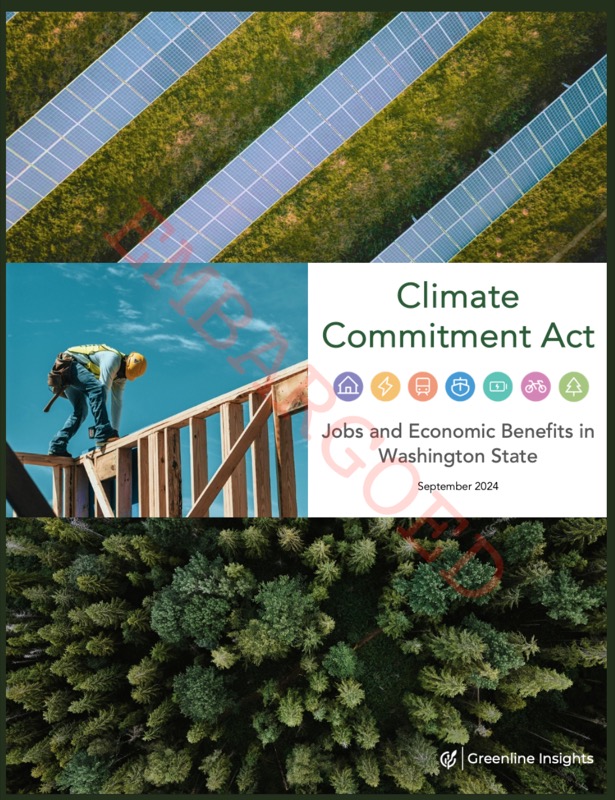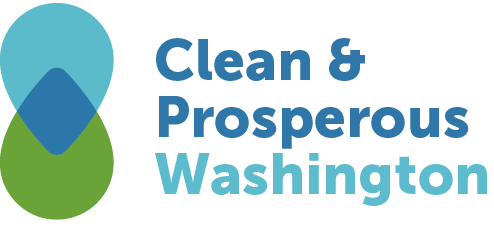Cap-and-Invest is a Force Multiplier
Climate instability is widely recognized as a threat multiplier. More wildfires, Deadlier heatwaves. Higher insurance rates. Increased threats to national security. A recent report by the Defense Science Board concludes, “Climate change will likely open avenues for new dimensions of conflict, including mass migrations and weaponization of critical resources.”
Climate action is fast becoming recognized as a force multiplier.
A new U.S. Chamber of Commerce report, The Preparedness Payoff: The Economic Benefits of Investing in Climate Resilience, shows that each $1 invested in disaster preparation saves $13 in economic costs, damages, and cleanup.
Here in Washington state, our Cap-and-Invest Climate Commitment Act (CCA) is funding investments that pay back many times over. According to The CCA Jobs & Economic Benefits Report from Greenline Insights, the CCA has the potential to create over 45,000 jobs and generate $9.1 billion in economic output over 8 years, all benefits that will be lost if the CCA is repealed due to actions by the Legislature or voters. With leveraged federal, local, and private-sector funding, the economic output could rise to $51 billion. For every dollar invested by the state, Greenline Insights projects up to $13 in economic growth.

On Wednesday, Sept 25th Clean & Prosperous Institute and Greenline Insights are hosting a webinar about the CCA Jobs & Economic Benefits Report.
If you are interested in attending, RSVP here.
- Silicon battery storage hub in Moses Lake
- With REC Silicon, Sila Nanotechnologies, Group14, and OneD Battery Sciences, Moses Lake is on track to become the Silicon Valley of clean energy.
- Silicon transformed how we store information; now silicon is transforming how we store energy.
- Green hydrogen hub across multiple sites in Washington
- The U.S. Department of Energy awarded up to $27.5 million for the PNWH2Hub as part of the Regional Clean Hydrogen Hubs program. The multiyear program could bring $1 billion in federal funding to PNWH2 over time.
- The PNWH2Hub has three projects planned for Washington. A project in Bellingham is aimed at heavy-duty transportation, another in Richland is focused on agriculture and a third project in Chehalis is focused on public transit.
- Clean energy hub in the Tri-Cities
- With the Columbia Generating Station, the Department of Energy’s Pacific Northwest National Labs (PNNL), and WSU’s Institute for Northwest Energy Futures, the Tri-Cities is nationally recognized as the “mecca for clean energy”.
- Now, The U.S. Department of Energy is entering negotiations with a Chicago corporation to build one of the largest solar and battery storage energy projects in the nation at Hanford.
Like Silicon Valley in California, these hubs will have a “flywheel effect” on their local economies, as they attract supply chain partners and spin off startups.
It’s worth noting that it’s not only the amount of funding that clean energy projects get from the CCA (and other sources), but also the timing of those investments. Much of the CCA and DoE funding is early-stage, “priming the pump” with R&D and pre-commercial, scale-accelerating investments. This aligns with the recommendation of RMI and Professor Mariana Mazzucato, that public policy should take an entrepreneurial approach:

It’s this entrepreneurial approach, combined with forward-looking innovation and the promise of multiplier returns that built Washington powerhouses such as Boeing, Microsoft, Starbucks and Amazon. Entrepreneurial investments in clean energy innovation, too, will return multiples in jobs and economic benefits, and build the next wave of Washington powerhouses.

